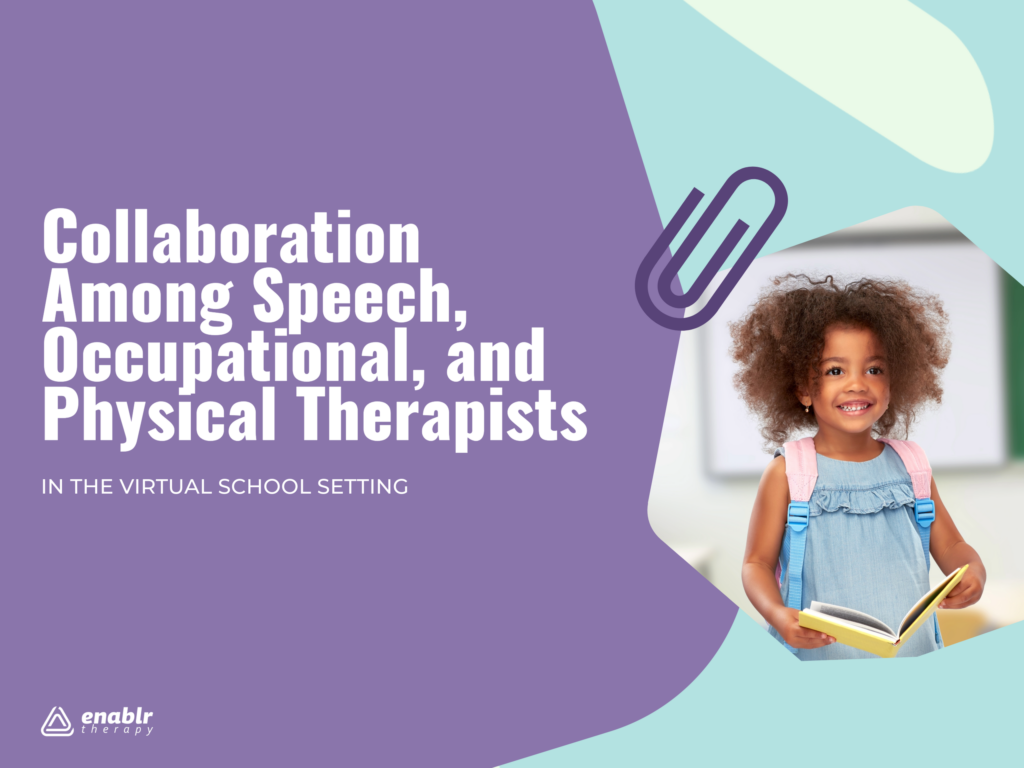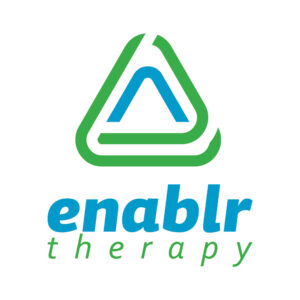Collaboration among speech, occupational, and physical therapy involves the coordinated efforts of professionals from these disciplines to address the diverse needs of individuals receiving therapy services. Collaboration among speech, occupational, and physical therapists is essential for providing comprehensive, coordinated, and client-centered care to individuals with diverse needs. By working together, therapists can leverage their collective expertise, resources, and perspectives to maximize therapeutic outcomes and support individuals in achieving their full potential.
In the ever-evolving landscape of education and healthcare, the integration of speech therapy (ST), occupational therapy (OT), and physical therapy (PT) in virtual school teletherapy has emerged as a powerful tool for supporting students’ holistic development. As we navigate the challenges of distance learning, the collaboration between these disciplines becomes increasingly essential in ensuring that every student receives the comprehensive care they deserve. However, the remote nature of teletherapy means that this collaboration must be intentionally planned as the organic collaboration that occurs when professionals share physical work spaces will not happen.
Strategies for Collaboration
Here are some strategies to foster collaboration and optimize therapeutic outcomes:
- Establish Clear Communication Channels: Utilize email, video conferencing platforms, and collaborative tools to facilitate regular communication among therapists. Establish designated times for virtual meetings, case conferences, and updates to ensure that everyone is informed and aligned.
- Develop Shared Goals and Objectives: Collaboratively develop individualized education plans (IEPs) or intervention plans that outline specific goals and objectives across speech, occupational, and physical therapy domains. Ensure that goals are cohesive, complementary, and reflective of the student’s unique needs and priorities.
- Coordinate Schedules: Coordinate therapy schedules to minimize conflicts and maximize opportunities for joint sessions or overlapping interventions. Consider staggered session times or flexible scheduling options to accommodate students’ availability and optimize therapist collaboration.
- Integrate Therapeutic Activities: Identify opportunities to integrate therapeutic activities across disciplines. For example, incorporate speech and language exercises into occupational therapy sessions focused on fine motor skills, or incorporate physical activities into speech therapy sessions to promote movement and engagement.
- Share Resources and Materials: Pool together resources, materials, and online tools that can be shared across therapy disciplines. Create a centralized repository or digital platform where therapists can access and contribute resources, such as educational apps, worksheets, and instructional videos.
- Participate in Joint Sessions: Schedule joint therapy sessions where multiple therapists work together to address overlapping goals or provide integrated interventions. Collaborative sessions promote interdisciplinary learning, foster communication between therapists, and provide students with a holistic approach to therapy.
- Provide Cross-Disciplinary Training: Offer training sessions or workshops where therapists can learn about each other’s areas of expertise, therapeutic approaches, and intervention strategies. Cross-disciplinary training enhances therapists’ understanding of how their roles intersect and enables them to collaborate more effectively.
- Utilize Telehealth Platforms: Explore telehealth platforms and virtual therapy tools that support multi-user functionality, screen sharing, and interactive activities. Choose platforms that facilitate real-time collaboration, secure communication, and seamless integration of therapy modalities.
- Seek Consultation and Feedback: Encourage therapists to seek consultation and feedback from colleagues within and outside their discipline. Foster a culture of collaboration, peer support, and continuous learning by creating opportunities for therapists to share insights, seek advice, and collaborate on challenging cases.
- Evaluate and Adjust Collaboration Strategies: Regularly evaluate the effectiveness of collaboration strategies and solicit feedback from therapists, students, and caregivers. Identify areas for improvement, adjust collaboration protocols as needed, and celebrate successes to maintain momentum and motivation.
Case Study: John
As an example of collaboration among teletherapist, let’s look at John. John is an 11th grade student who has Down Syndrome. He attends a virtual school with his mother providing learning support as needed. John has speech and language therapy as well as occupational therapy services on his IEP. Goals for John focus on independence with opening and closing various containers, sequencing events for completion daily routines, following two-step directions with visual supports, and improving expressive language skills by using three to four-word phrases to communicate his wants and needs.
John’s speech language pathologist (SLP) and occupational therapist (OT) provided online therapy services. To facilitate collaboration, the therapists exchanged their phone numbers and email addresses. They created a shared Google Drive folder to collaborate on visual supports or other resources for the student. For instance, OT created a series of mini-routine picture schedules around daily activities like getting ready in the morning and making a sandwich. The SLP then used some of those visuals in her sessions to work on language skills.
In addition, the OT and SLP participated in a co-treatment session 1x every 4 weeks. During these sessions, John completes various activities of daily living. During one session, John worked on washing his hands and making a peanut butter and jelly sandwich. The OT provided instruction around opening and closing different containers and adaptations for the activities. The SLP worked on verbal expression to communicate what item he would need and following directions to make the peanut butter and jelly sandwich.
By establishing communication channels, participating in a regular collaborative session, and sharing visual support and other resources, the SLP and OT were able to support each other’s interventions. In addition, they were able to work closely with the parents for carryover at home. As a result, John has learned to complete his basic self care routines and prepare himself simple snacks and lunch without assistance.
Through shared goals and resources, coordinated efforts, and innovative approaches, therapists can create meaningful opportunities for students to thrive academically, socially, and developmentally. And the therapists are able to support and learn from one another. This is true teamwork.
Contact us to learn more!



